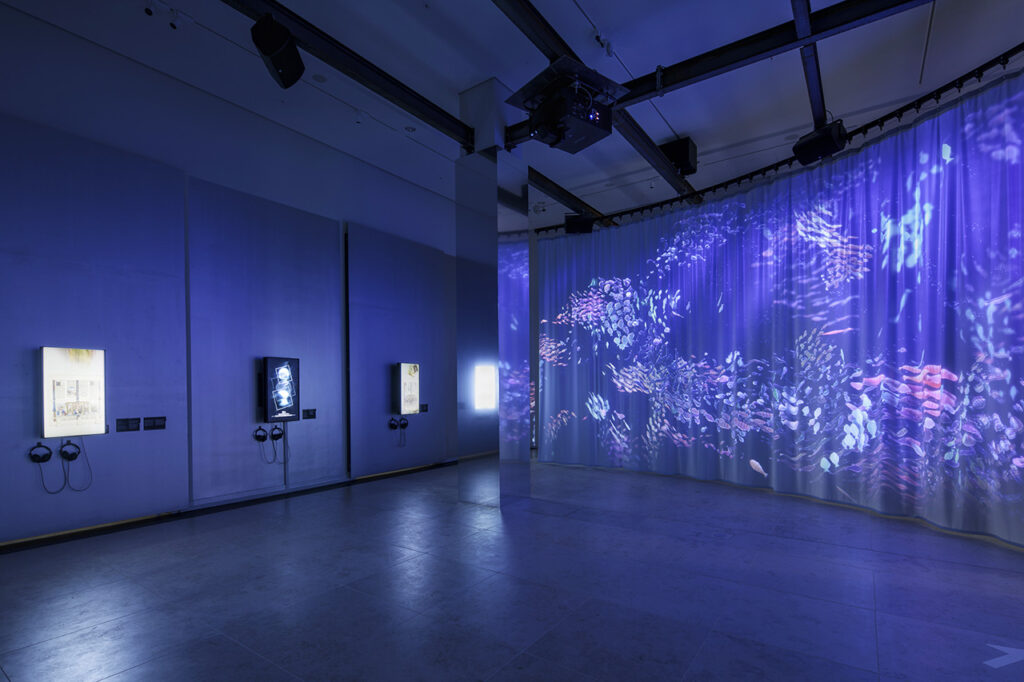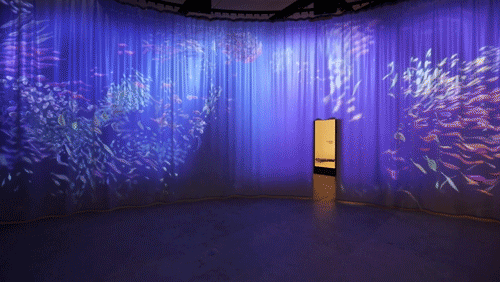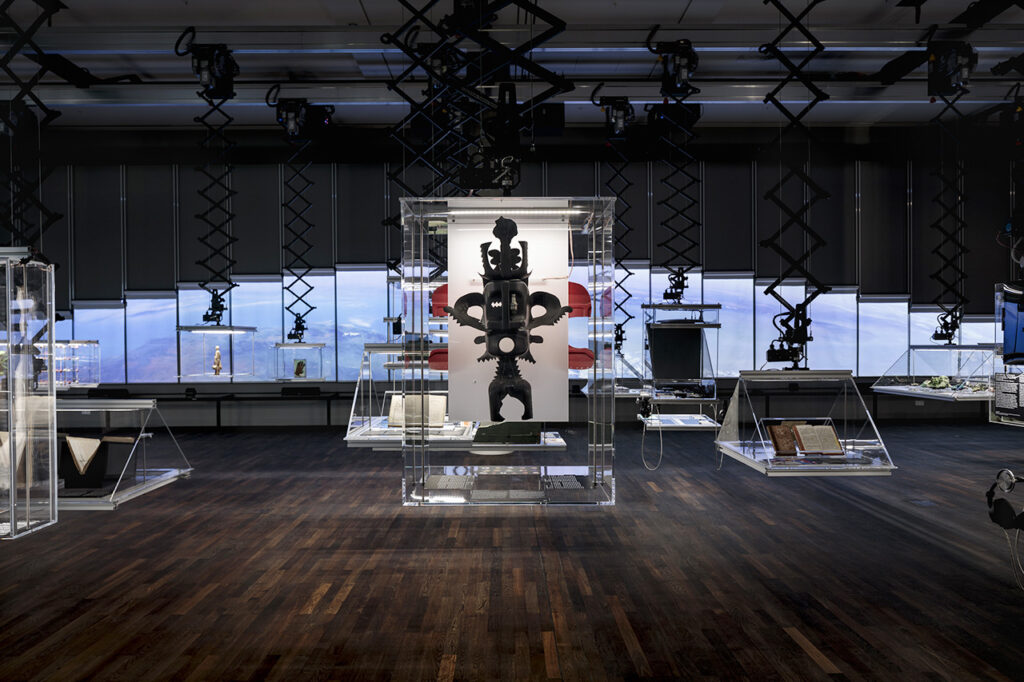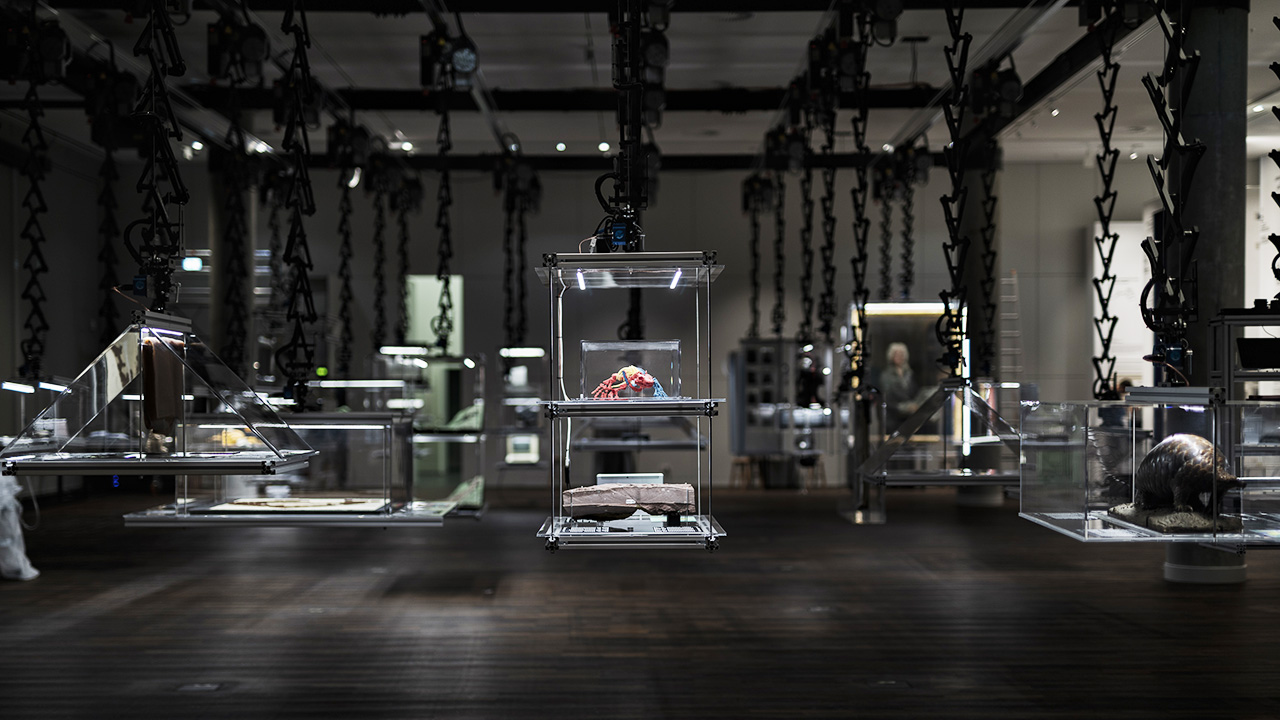A university’s exhibition of its scholarship could very well be a dry and didactic exercise, burdened with academic wall text and unstirring artifacts. The Humboldt-Universität zu Berlin (HU), however, was having none of that for its inaugural show. Instead, to present its sizeable holdings — collections that document two centuries’ worth of scientific research and practice — the Berlin institution is launching its own exhibition space, Humboldt Laboratory on the first floor of the Humboldt Forum, with a showcase that captures and communicates the wonder and dynamism of scientific discovery.
Opening on July 20, After Nature arrays some 300 scientific objects and four archives (including HU’s UNESCO-recognized Sound Archive) across an exhibition spotlighting our climate crisis, inviting interpretation as much as interaction. “We are dealing with objects that were there from the university’s founding in the 19th century, but also with cutting edge research that’s going on right now,” says Aura Luz Melis, Project Architect at Inside Outside, the Amsterdam firm that designed the space. “It was really important that the exhibition had to be radical somehow.”
That accounts for the show’s approach to presentation, which takes cues from the chambres de curiosités or wunderkammer of Renaissance Europe. In the main hall, for example, vitrines are strikingly hung from a mobile pantograph system that allows for versatile display and non-hierarchical viewing. “You can walk around it, you can have the flexibility to expose a group of objects or just one, or you can have a lecture around it,” Luz Melis tells Jing Culture & Commerce. “In that sense, it’s interactive.”

The interactive projection, Fischschwarm, spotlights presentations from the Berlin Clusters of Excellence in the foyer of the Humboldt Lab. Image: © Humboldt-Universität zu Berlin / schnellebuntebilder / Inside Outside | Petra Blaisse / Photo: Philipp Plum
But it’s in the exhibition’s foyer that you’ll find its interactive centerpiece: an enormous translucent curtain, hung from ceiling to floor in a semicircle, on which is projected an animation of swimming fishes. Dubbed Fischschwarm (roughly, “school of fish”), the installation is visitor-responsive. Five 3D cameras, situated on either side of the curtain, track the movements and gestures of viewers, with the body of fishes reacting accordingly. “Everything is perceived by the swarm,” explains Johannes Timpernagel, co-founder of Berlin studio schnellebuntebilder, which built the experience. “If you’re friendly and nice, it’s interested in you, but as soon as you get too aggressive, the swarm gets panicked.”
Accompanying the visualization is a soundscape that, likewise, shifts with the motion of the fishes. The message here? “Everything is connected,” says Timpernagel. “There’s some kind of swarm intelligence happening and we as humans are part of the swarm.” For him, the installation serves as a useful and compelling metaphor for the sensitivity of biodiversity, bearing out a key facet of HU’s scientific inquiry.

The installation highlights our connection with the natural ecosystem and the urgency of preserving biodiversity. Image: Humboldt Lab
Timpernagel’s studio, long-established in the fields of animation and interactive technology, has worked with cultural venues such as the Elbphilharmonie Hamburg and the Zuse Computer Museum in Hoyerswerda over the past decade, developing experiences aimed at audience immersion and engagement. “We are really into using technology as a vehicle in exhibitions to tell a story, not in a conservative way,” he says, “but using these techniques to actively approach visitors more emotionally.”
Schnellebuntebilder’s efforts can also be located in another section of After Nature, at an installation termed the Research Wall. Highlighting how environmental shifts intersect with social and political structures, the exhibit unfurls as a two-and-a-half hour-long visualization on 24 adaptive screens across a roughly 30-meter wall in the main hall.
Designed by the studio and crafted by engineer Jan Berstein in a project that began in 2018, these screens, though affixed to the wall by cables, can be enlarged, contracted, and slid up or down to graphically and kinetically enrich the presentation. In one segment, for instance, the screens form a cluster at the bottom of the wall to jointly reveal an image of Earth rising into view; slowly, they expand upward to accommodate the planet’s changing position.

An installation view of After Nature, with a mask by the artist Romuald Hazoumè from Benin in the foreground and the Research Wall in the back. Image: © Humboldt-Universität zu Berlin / schnellebuntebilder / Inside Outside | Petra Blaisse / Photo: Philipp Plum
No passive display, the Research Wall requires, in Timpernagel’s description, “choreography” or a visual timeline that directs what’s projected and how much is projected on the wall or on the screens. Sound, too, can be piped through room-wide speakers or directed on a precise spot. “You can reveal different elements as windows, or you can move the screens up to just use the wall as a backdrop,” he adds. “You could play in endless ways with these modular screens.”
As with Fischschwarm, this installation tracks and responds to visitors’ presences. Say, if a viewer is close to a screen, it remains open and the volume of directed sound rises for better clarity. While encouraging audience participation, such features ensure the Research Wall alone does not dominate the room or overshadow neighboring exhibits. The point of this new medium is to “impress the people, not to overwhelm them,” as Timpernagel puts it.
In fact, in between Luz Melis’ “landscape of vitrines” and schnellebuntebilder’s kinetic installations, visitor experience is front and center at After Nature. The non-sequential exhibition design, Luz Melis hopes, offers the audience “many things that [they] can focus on, but [they] can also really enjoy the totality.” And an understanding of that totality, however dense or academic, will likely be greatly facilitated by presentations that engage, educate, and entertain in equal measure. “The thing was finding a sweet spot for these complex topics without being too old-fashioned about it,” says Timpernagel. “My wish is that people leave thinking about the exhibits they’ve seen here in a new way.”



